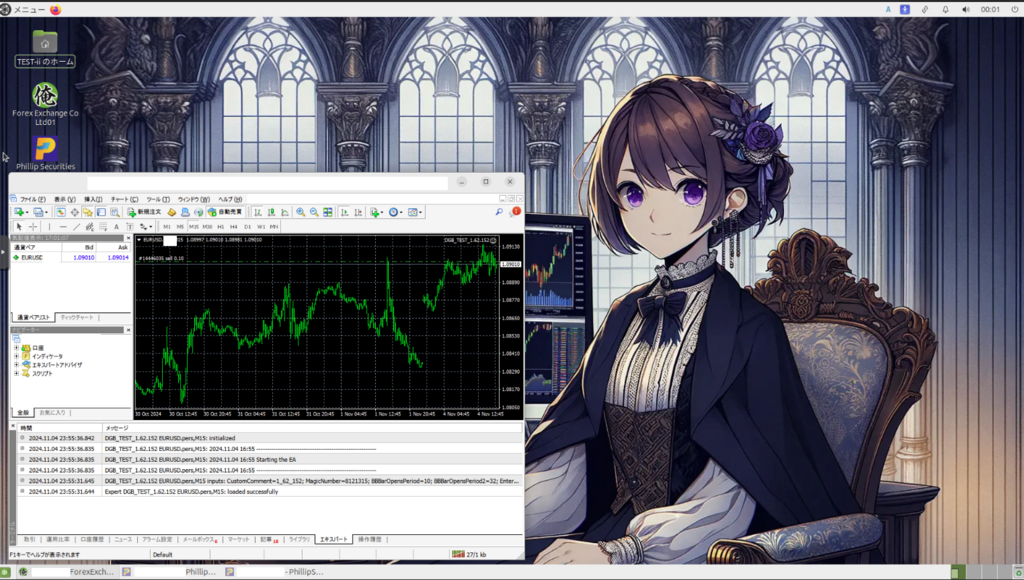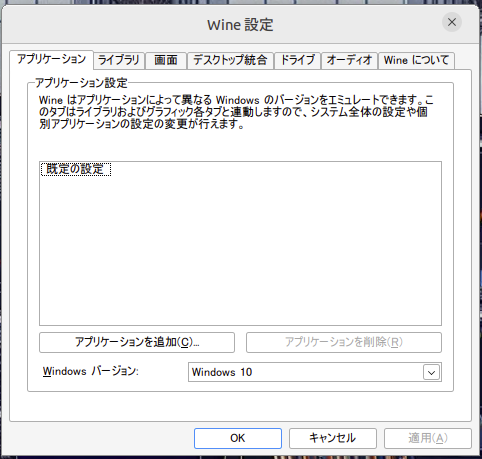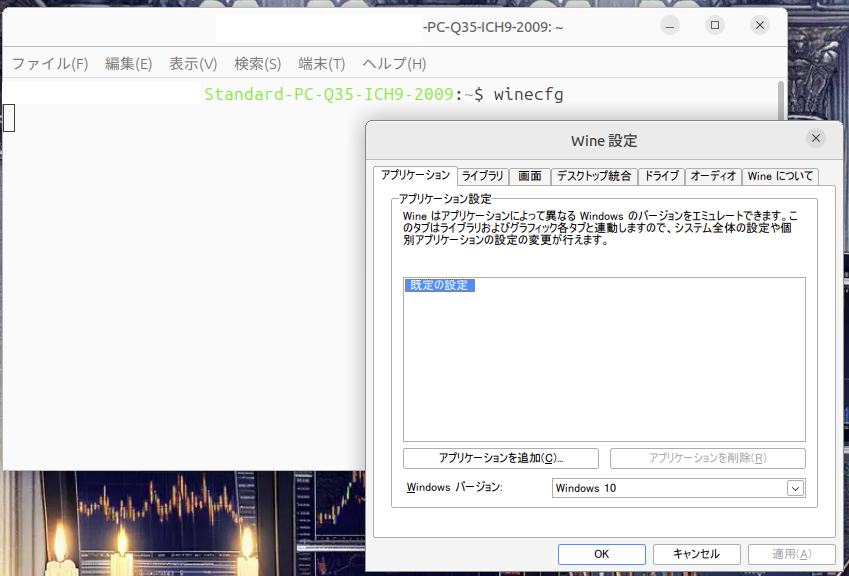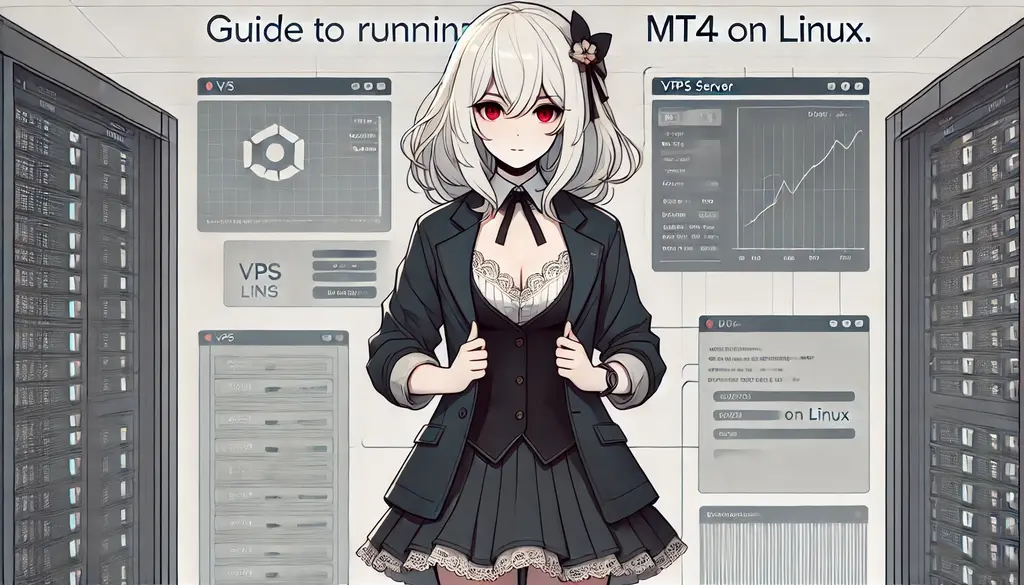- 1 1. Introduction
- 2 2. Preparation for Using MT4 on Linux
- 3 3. MT4 Installation Procedure
- 4 4. MT4 Configuration and Optimization on Linux
- 5 5. Notes and Troubleshooting When Using MT4 on Linux
- 6 6. Comparison of Linux-Compatible VPS Services
- 7 7. Summary
1. Introduction
MetaTrader 4 (MT4) is a widely used trading platform, especially popular in the foreign exchange (FX) market.
It is favored by many users, from professional traders to beginners, due to its powerful tools and user-friendly interface.
MT4 offers access to multiple financial instruments, real-time chart display, customizable technical indicators, and Expert Advisor (EA) functionality for automated trading.
Many Linux users wish to run MT4 on Linux without relying on operating systems like Windows or Mac.
Linux is an open-source OS widely adopted as a server environment due to its advantages in security and cost.
Furthermore, stability and customization freedom are often sought after in trading, making the benefits of using MT4 in a Linux environment significant.
On the other hand, MT4 is not officially supported on Linux, so standard installation procedures are not provided.
Therefore, special installation methods and configurations are required to use MT4 on Linux.
This article will explain the specific steps and considerations for running MT4 on Linux in detail.
Next, in the following section, “Preparation for Using MT4 on Linux,” we will introduce the necessary software and environment setup steps in detail.

Image: Ubuntu MATE – MT4
2. Preparation for Using MT4 on Linux
To use MT4 on Linux, you need to install specific software and set up the environment.
This section explains the installation procedures for necessary tools and points to consider when choosing a Linux distribution.
Required Software: How to Install and Configure Wine
MT4 is developed for Windows and cannot be run directly on Linux.
Therefore, we will use “Wine,” a compatibility layer that allows Windows applications to run on Linux.

Image: Wine Configuration Screen (Linux)
Please follow the steps below to install and configure Wine.
1. Installing Wine
Wine is supported by many Linux distributions and can be easily installed.
Here, we will show the steps using Ubuntu as an example.
- First, open a terminal and update the system to the latest state.
sudo apt update && sudo apt upgrade- Next, install Wine.
sudo apt install wine- Once the installation is complete, verify the Wine version to confirm it was installed correctly.
wine --version2. Configuring Wine
After installing Wine, you need to configure it.
Through configuration, you ensure that Windows applications function correctly in the Linux environment.
- Launch the Wine configuration tool from the terminal.
winecfg- Upon the first launch, Wine will automatically download necessary files and perform the configuration.
- Set the “Windows Version” to “Windows 10” to enhance compatibility.
- Save the settings and exit.

System Requirements: Linux Distribution Options and Recommended Specs
To comfortably use MT4 on Linux, selecting an appropriate distribution (OS type) and system specifications is crucial.
Consider the following points to set up the optimal environment.
Choosing a Distribution
- Ubuntu: The most common Linux distribution, supported by a wide range of users from beginners to advanced.
Wine installation is easy, and there is abundant troubleshooting information. - Debian: Highly stable and offers long-term support, making it suitable for server environments.
Recommended for long-term MT4 operation. - CentOS or Fedora: Specialized for server use, suitable for stable MT4 operation, but Wine configuration might be more complex.
Recommended Specifications
- CPU: Dual-core processor or higher is recommended.
Trading requires real-time chart rendering, so a CPU with high processing power is desirable. - Memory: 4GB of RAM or more is recommended. While Linux itself is lightweight, sufficient memory is needed to run MT4 via Wine.
- Storage: SSD is recommended. It improves the read/write speed of chart data, enhancing MT4’s responsiveness.
With these steps, your environment for using MT4 on Linux is set up.
In the next section, “MT4 Installation Procedure,” we will detail the steps for installing MT4.
3. MT4 Installation Procedure
To run MT4 on Linux, the common method is to install it as a Windows application using Wine.
Here, we will explain the installation procedure using Wine in detail.
Important Note
The procedure in this section assumes the installation of the English version of MT4. If you want to change MT4 to display in Japanese, you need to install Japanese fonts to prevent garbled characters. The procedure for installing Japanese fonts is explained in detail in the later section, “Japanese Display Settings and Font Installation.”
Please note that even after switching from English to Japanese, some charts and displays may not be reflected correctly. Also, while it may be possible to copy and use Windows fonts in the Linux environment, this method is not recommended as it may violate font license terms.
Easy Installation Method Using Official Scripts
Some FX brokers and communities provide scripts to simplify MT4 installation on Linux.
Using a script allows for Wine configuration and MT4 installation to be done in one go, reducing the effort required for setup.
- Download the official script
Download the script distributed on the FX broker’s website or the official Wine website. - Execute the script
Give execute permissions to the downloaded script file.
chmod +x install_mt4.shThen, execute the script to install MT4.
./install_mt4.sh- Launch MT4
After the installation is complete, launch MT4 and connect to your broker’s server if necessary.
Manual Installation Procedure
You may also install MT4 manually without using a script.
This procedure involves configuring Wine, downloading the MT4 installer, and installing it individually.
1. Wine Configuration
First, review the Wine configuration and adjust it so that MT4 operates correctly. Follow the steps below:
- Open the Wine configuration tool in the terminal.
winecfg- Set the “Windows Version” to “Windows 10” to optimize compatibility.
- Save the settings and exit.

2. Downloading MT4
Next, download the MT4 installer file from your FX broker’s official website.
Most brokers offer MT4 for free and it can be obtained directly from their official sites.
3. Installing MT4
- Start the installation using the downloaded installer file.
*mt4setup.exe is just an example and the file name may differ.
*If you select Japanese without installing Japanese fonts, garbled characters may occur.
wine mt4setup.exe- Follow the installation wizard, specify the installation destination, and complete the process.
- Once the installation is finished, MT4 will be installed within Wine and can be executed on Linux.
4. Launching MT4 and Initial Setup
After the installation is complete, launch MT4 and perform the initial setup.
- Launch MT4 and log in to your broker’s server.
- If necessary, enter your account information and set up your trading environment.
Now MT4 is available for use on Linux.
The next section, “MT4 Configuration and Optimization on Linux,” explains how to configure MT4 for smoother operation.
4. MT4 Configuration and Optimization on Linux
To operate MT4 stably and efficiently on Linux, several configurations and optimizations are important.
This section explains how to adjust display settings and optimize performance in detail.
Japanese Display Settings and Font Installation
MT4’s standard interface is English, but it can also be used in Japanese.
When using Wine, Japanese may not be displayed correctly if font settings are insufficient, so let’s install and configure fonts.
1. Installing Japanese Fonts
Using Ubuntu as an example, here are the steps to install Japanese fonts.
- Open a terminal and install Japanese fonts with the following command.
sudo apt install fonts-noto-cjk- Once the installation is complete, Japanese should be displayed correctly.
2. Applying Japanese Fonts in Wine
Let’s also check the font settings within Wine.
Open the Wine configuration screen (winecfg) and confirm that the default fonts are applied.
If necessary, adjust the font size and style to correct display issues.
Settings for Stable Operation
MT4 running via Wine can significantly improve its stability depending on the settings.
Apply the following settings to maximize MT4’s performance.
1. Process Priority Settings
Adjust the process priority of MT4 running on Wine to improve resource usage efficiency.
Refer to the following steps:
- Open a terminal and check the process ID (PID) of MT4 with the following command.
ps aux | grep terminal.exe- Once the PID is confirmed, use the
renicecommand to adjust the priority.
sudo renice -n -10 -p [PID]Here, using a value of -10 increases the priority, potentially leading to smoother operation.
2. Adjusting Settings within MT4
Adjusting settings within MT4 also helps improve stability and performance.
- Optimizing Chart History Data: Accumulating unnecessary chart history data can slow down operations.
Set the retention period for history data shorter if necessary. - Adjusting the Number of Indicators and EAs: Use only the minimum necessary indicators and EAs to reduce resource consumption.
Optimization for Performance Improvement
This section introduces settings and tools for optimizing MT4 on Linux.
1. Using a Virtual Desktop
Wine has a virtual desktop mode, which can improve stability and reduce error messages when used.
- Open the Wine configuration screen in the terminal.
winecfg- Select the “Graphics” tab, check “Emulate a virtual desktop,” and set the resolution.
2. Using an SSD
MT4 frequently reads and writes large amounts of data, so storage speed is also important.
Using an SSD, which is faster than an HDD, speeds up chart rendering and data loading, improving responsiveness.
With these steps, you have completed the settings and optimizations for stable and comfortable use of MT4 on Linux.
The next section will explain “Notes and Troubleshooting When Using MT4 on Linux.”

5. Notes and Troubleshooting When Using MT4 on Linux
When operating MT4 on Linux, specific issues and limitations can arise compared to Windows.
This section explains common problems and their solutions.
It’s advisable to review these countermeasures in advance to prevent issues during trading.
Common Problems and Their Solutions
Problem 1: Error messages displayed at startup
When launching MT4 using Wine on Linux, error messages may appear.
This is caused by insufficient Wine configuration or missing libraries.
Solution:
- Recheck the Wine configuration and confirm that “Windows Version” is set to “Windows 10”.
- Missing dependent libraries might also be a cause, so reinstall Wine’s dependencies with the following command.
sudo apt install --install-recommends wine- If the issue persists, check the official Wine website or community forums for information regarding similar error messages.
Problem 2: Japanese is not displayed or is garbled
If Japanese is not displayed correctly, there might be an issue with the Japanese font settings.
Solution:
- Check if the fonts are installed, and if not, add fonts with the following command.
sudo apt install fonts-noto-cjk- Check the font settings in the Wine configuration screen and adjust font size and style as needed.
Problem 3: Chart operation becomes slow or freezes
MT4 chart display may lag or freeze.
This is more likely to occur when using multiple charts or indicators.
Solution:
- Enable Wine’s virtual desktop mode and optimize the resolution.
- Reduce chart history data and adjust the number of indicators and EAs to minimize resource consumption.
- To avoid resource-intensive settings, a system with a dual-core processor or higher and 4GB of RAM or more is recommended.
Utilizing Official Support and Community Forums
MetaQuotes, the developer of MT4, does not officially support Linux, making it difficult to contact official support when issues arise.
Therefore, utilizing the following forums and communities is effective for resolving problems on Linux.
- Wine Official Forum: The official Wine website has forums where information and troubleshooting tips regarding MT4 operation on Linux are shared.
- MT4 User Forum: In forums where traders exchange information, you may find questions and answers related to operating MT4 in a Linux environment.
- Reddit and Japanese Trading Communities: You can also get hints and information for using MT4 on Linux in international communities like Reddit and Japanese trading-related message boards.
Utilize these resources for troubleshooting and optimizing your settings.
The next section will discuss “Comparison of Linux-Compatible VPS Services” and help you choose the optimal VPS for using MT4 in a Linux environment.
6. Comparison of Linux-Compatible VPS Services
To operate MT4 stably in a Linux environment, using a VPS (Virtual Private Server) is effective.
Using a VPS allows for constant uptime during trading and ensures a stable network environment, so you won’t miss trading opportunities.
Here, we compare Linux-compatible VPS services and consider the optimal choice for traders.
How to Choose a VPS Service
Consider the following points when choosing a VPS to comfortably use MT4 or MT5 on Linux.
- Uptime: A VPS with an uptime of 99.9% or higher contributes to trading stability.
- CPU and Memory Specs: Since MT4 involves significant data processing, a plan with at least 1GB of memory and a dual-core CPU or higher is desirable.
- Linux Compatibility and OS Types: Services that support Linux distributions like Ubuntu or Debian are particularly optimal.
- Support Quality: Having a support system that can assist when issues arise in the Linux environment provides peace of mind.
Recommended VPS Services
1. Best Net VPS Service
Best Net is a VPS service specifically optimized for FX automated trading and offers Linux-compatible plans.
This VPS is highly regarded for its security and stability and is supported by many traders.
For detailed information and pricing plans, please refer to the following article linked internally.
2. ConoHa VPS
ConoHa is a popular VPS service in Japan, supporting multiple Linux distributions such as Ubuntu and CentOS.
It’s recommended for beginners as it’s available from affordable plans.
3. Sakura VPS
Sakura VPS is a Japanese VPS provider known for stable performance and support.
It offers a wide selection of Linux distributions and meets the necessary specifications for operating MT4 and MT5.
Summary
Each VPS service has its own characteristics, and it is important to choose the optimal one according to your purpose and budget.
Use internal links to get more detailed information about Linux-compatible VPS services and operate MT4 in the optimal environment.
In the next section, “Summary,” we will provide key points and an overview of using MT4 on Linux.

7. Summary
While specific software and configurations are required to use MetaTrader 4 (MT4) in a Linux environment, you can operate it with performance comparable to Windows if set up correctly.
This article has provided detailed information on preparing for and installing MT4 on Linux, methods for stable operation, and a comparison of VPS services.
Key Points for Operating MT4 on Linux
- Wine Configuration and Optimization: Since Wine is used to run Windows applications, optimizing Wine’s version and settings is crucial.
- Installation of Necessary Software and Fonts: Properly configure Japanese fonts to improve MT4’s display and usability.
- Leveraging VPS: Utilizing a Linux-compatible VPS makes it possible to run your trading environment 24 hours a day stably.
Using MT4 on Linux offers different convenience and customization compared to other OSs, so try to set up the optimal environment according to your trading style.
For more detailed information and recommended VPS services, please also refer to this past article.
Understand how to use MT4 on Linux and enjoy the freedom of a highly customizable trading environment.
目次 1 1. Introduction2 2. What is Wine?3 3. How to Install Wi…











